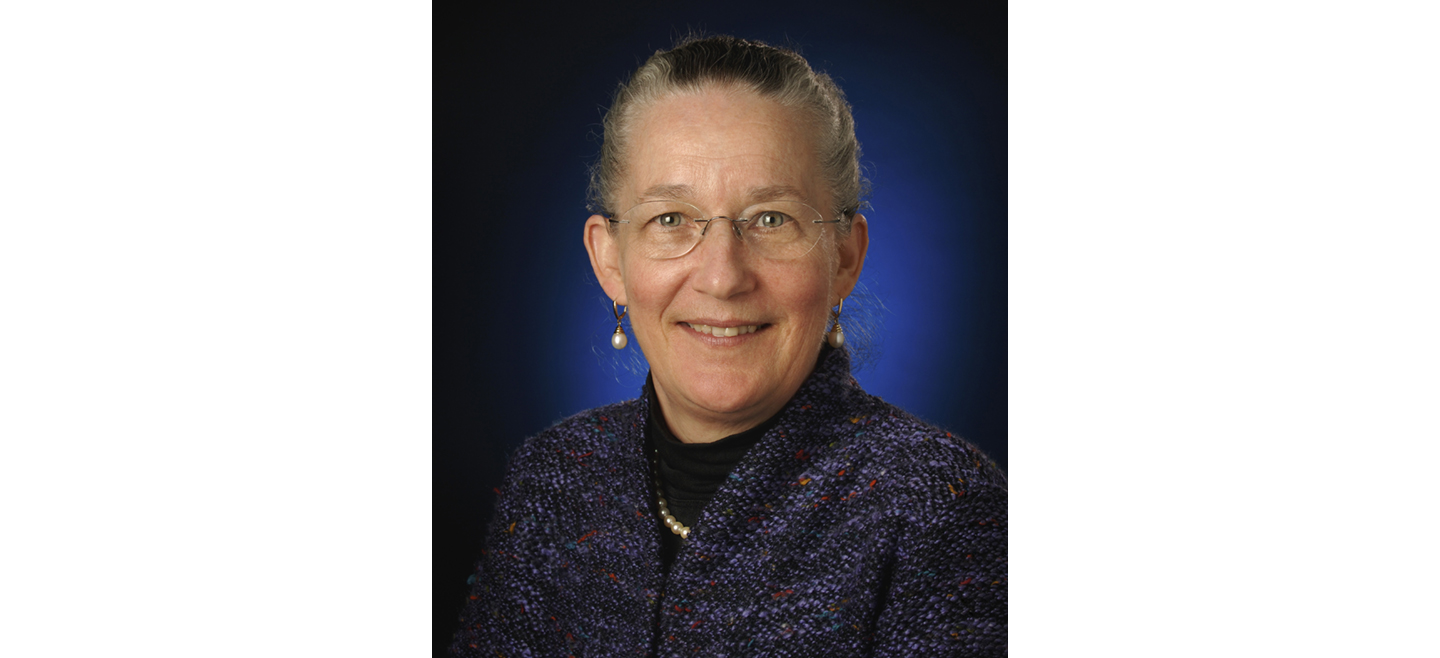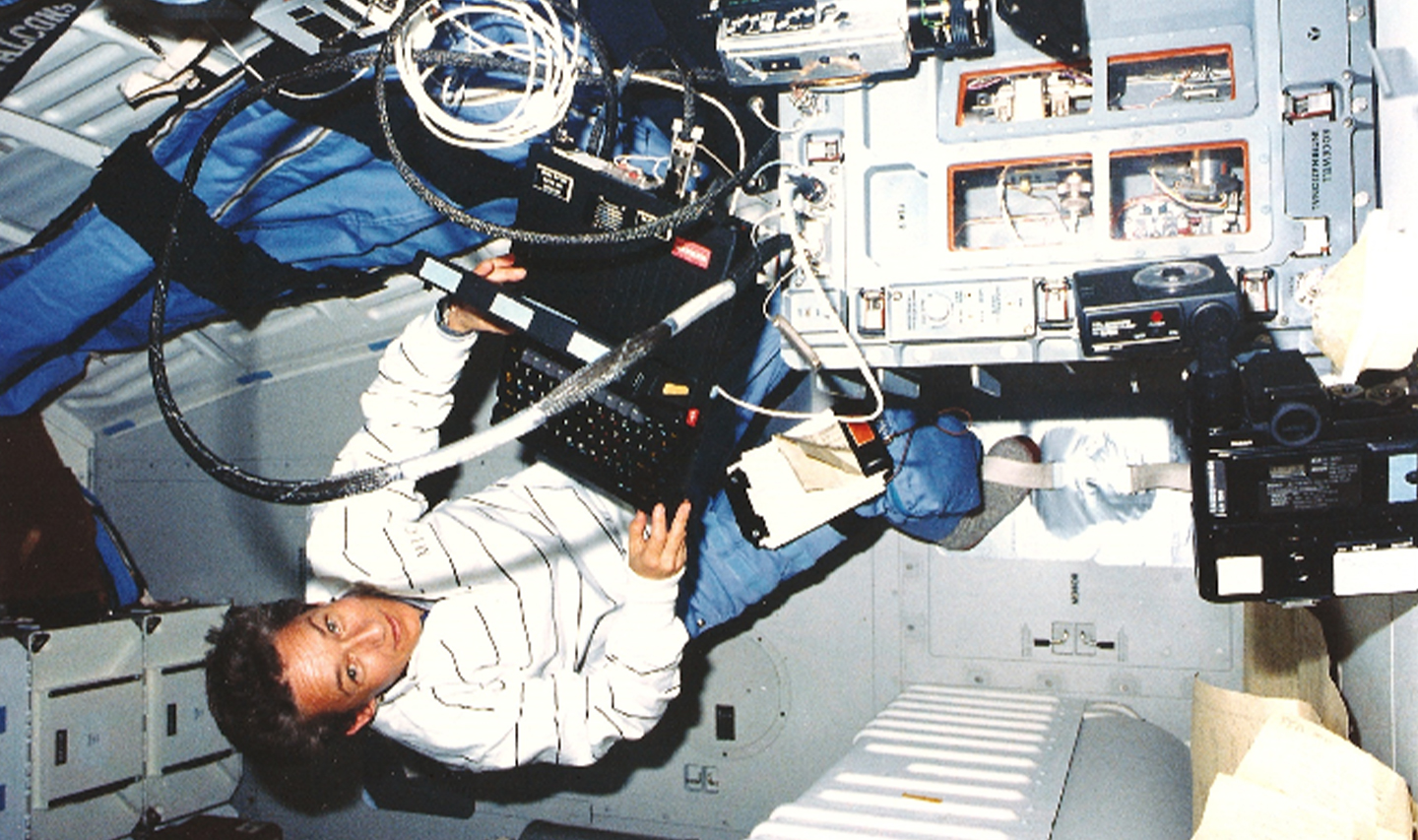Acclaimed NASA astronaut, engineer, and administrative leader Mary Cleave died on November 27, 2023, at age 76. Her very full and impactful 27-year NASA career started in 1980 when she became an astronaut based at Johnson Space Center (JSC), following which she was a Project Manager at Goddard Space Flight Center (GSFC) and then an administrator at NASA Headquarters. In each of her roles, Mary was a dedicated, no-nonsense, enthusiastic contributor, and she is now being mourned by many who knew and worked with her.
Mary was born on February 5, 1947, in Southampton, NY, and grew up in Great Neck, NY, graduating from Great Neck North High School in 1965. She received a bachelor’s degree in biological sciences in 1969 from Colorado State University, a master’s degree in microbial ecology in 1975 from Utah State University, and a Ph.D. in civil and environmental engineering in 1979 from Utah State University. While in graduate school and continuing until June 1980, Mary worked at the Utah Water Research Laboratory and the Ecology Center at Utah State University, tackling such topics as the effects of increased salinity on freshwater phytoplankton productivity.
Mary was selected as a NASA astronaut in May 1980 and five years later became the tenth woman to fly in space, doing so on the first of her two Space Shuttle missions, STS-61B on Space Shuttle Atlantis in 1985. She was the STS-61B’s flight engineer, operated the Shuttle’s robotic arm, and conducted a set of experiments for the 3M company. In 1989, Mary flew on her second Space Shuttle mission, STS-30, also on Atlantis (see Photo), becoming the first woman to fly on the Shuttle after the devastating 1986 Challenger explosion. During STS-30, Mary deployed the Magellan spacecraft on its journey to Venus, where it collected valuable information about the Venusian surface, atmosphere, and magnetic field, mapping more than 95% of the planet’s surface. Altogether, Mary was in space for 10 days and 22 hours, orbiting the Earth 172 times and traveling 3.94 million miles. She was also capsule communicator (CAPCOM) for five additional Shuttle flights.
In 1991, Mary moved to Maryland and began work at GSFC, eventually becoming Project Manager for the Sea-viewing Wide-Field-of-View Sensor (SeaWiFS), which was designed to make global measurements of the Earth’s oceans. The SeaWiFS mission had been in danger of being canceled when Mary took over and assertively reset its course, leading it through to its successful 1997 launch on the OrbView-2 satellite. For the next 13 years, SeaWiFS collected an extremely valuable dataset that has been used in hundreds of scientific publications, as well as being used operationally by the NOAA Coast Watch Program, the U.S. Marine Fisheries Service, and the U.S. Geological Survey, especially to monitor coastal water quality, including red tides, clarity, and sedimentation in coastal and estuarine waters.
In 1998, Mary moved to NASA Headquarters, where she became the first woman to lead NASA’s Science Mission Directorate (SMD). As Associate Administrator for SMD, Mary had responsibilities that extended from Earth environmental measurements to spacecraft probing the outer reaches of the Solar System and the universe at large, overseeing a large variety of research programs and satellite missions. Among her many contributions, she provided visionary leadership by encouraging a long-term carbon research program to address Earth’s growing problems with human impacts on the environment and climate.
When Mary retired from NASA in February 2007, her initial plan was to unwind for several months and then seek a new full-time job. However, she quickly found that she so enjoyed the freedom of picking and choosing what to do and when to do it that she happily abandoned the thought of another full-time job. Instead, she filled her time with enjoyable, meaningful volunteer activities, speaking frequently to students and adults about her astronaut experiences, encouraging girls in particular to pursue interests in science and engineering, participating annually at the National Air and Space Museum’s Women in Aviation Day, volunteering with the Maryland Science, Technology, Engineering, and Mathematics (STEM) Festival, the Maryland Women’s Heritage Center (MWHC), the League of Women Voters, and a dog-rescue group, as well as serving on the Annapolis Commission on Aging and on a variety of corporate boards and advisory committees. She maintained a full schedule of activities while also enjoying time visiting with family and friends and taking in the beautiful view of Chesapeake Bay from her Annapolis condominium.
Mary was inducted into the Long Island Air and Space Hall of Fame in 2010 and the Maryland Women’s Hall of Fame in 2022. Her NASA awards include the NASA Space Flight Medal, the NASA Exceptional Service Medal, the NASA Exceptional Achievement Medal, and the NASA Engineer of the Year award.
Mary is survived by her sister Gertrude “Trudy” Carter and her sister Barbara “Bobbie” Cleave Bosworth. She will be missed by many in the NASA family and elsewhere as an enthusiastic, inspiring, kind, and thoughtful individual who lived a full and exciting life and was dedicated to helping others to have the opportunity to do the same.
Acknowledgments: The Earth Observer staff wishes to thank Claire Parkinson [GSFC] for writing this In Memoriam, and Claire thanks Chuck McClain [GSFC, retired] and Dot Zukor [GSFC] for carefully reviewing the text pre-publication.
























